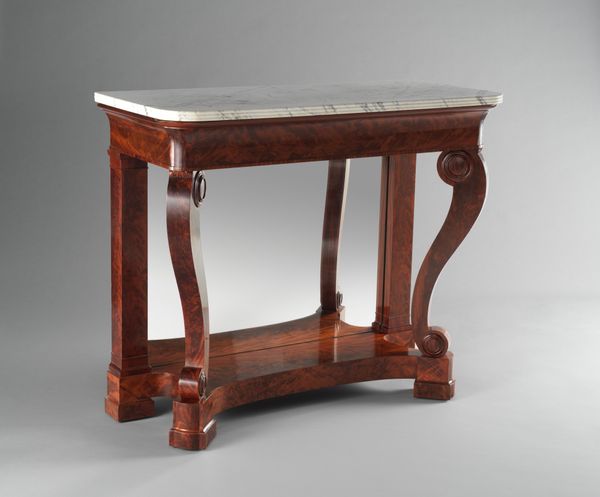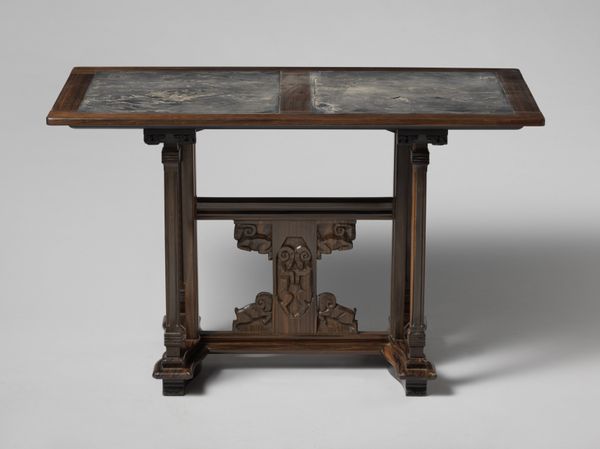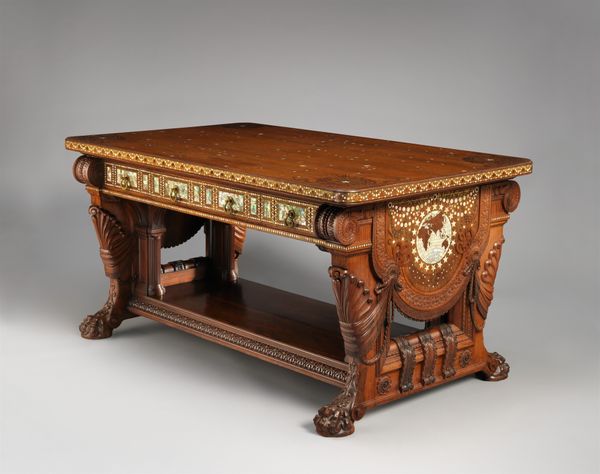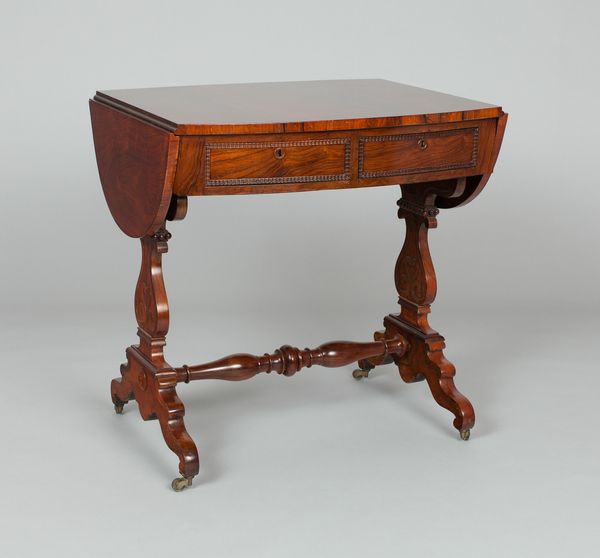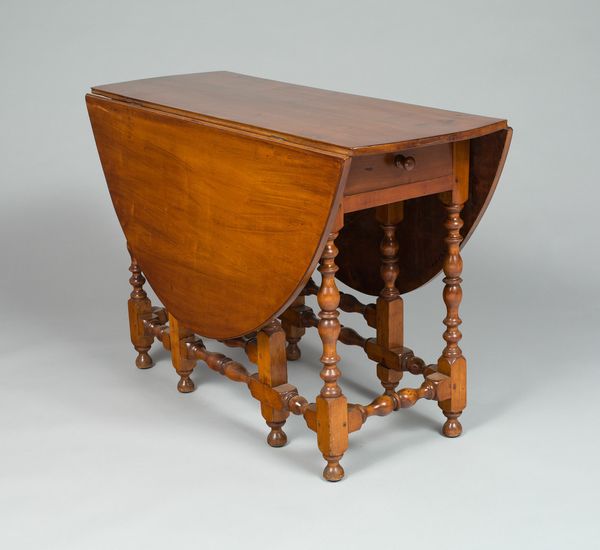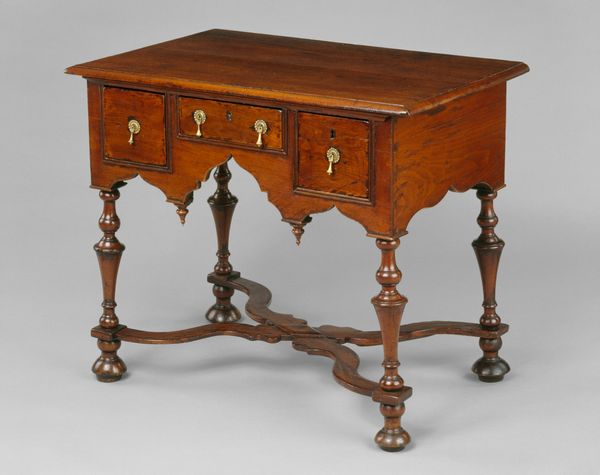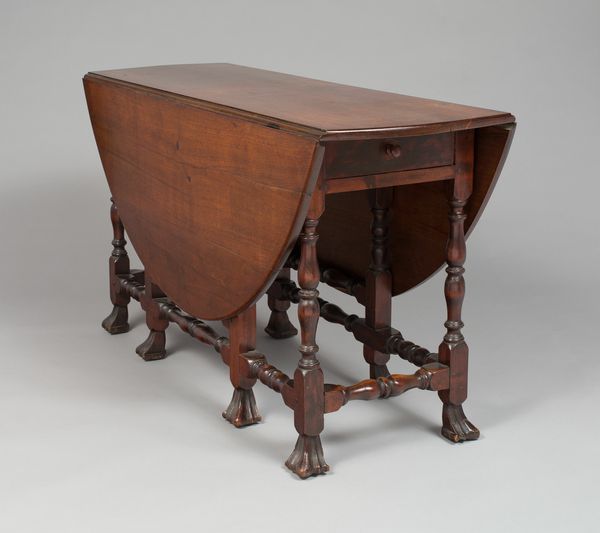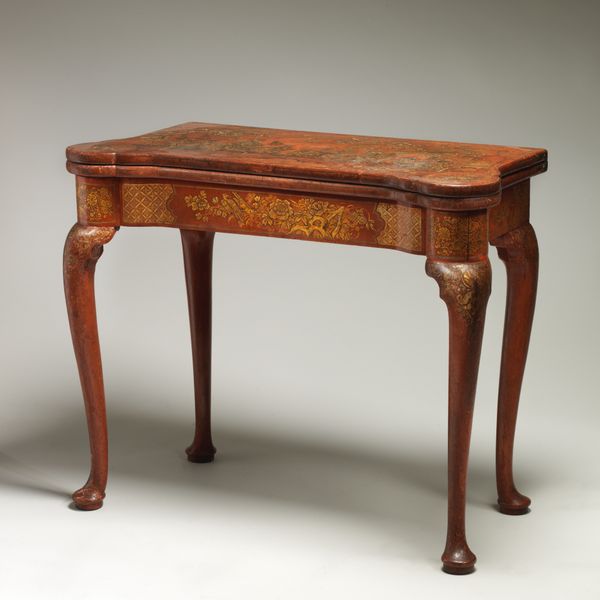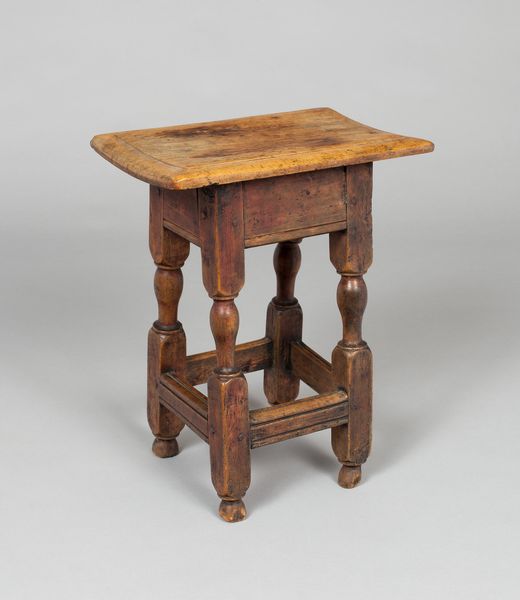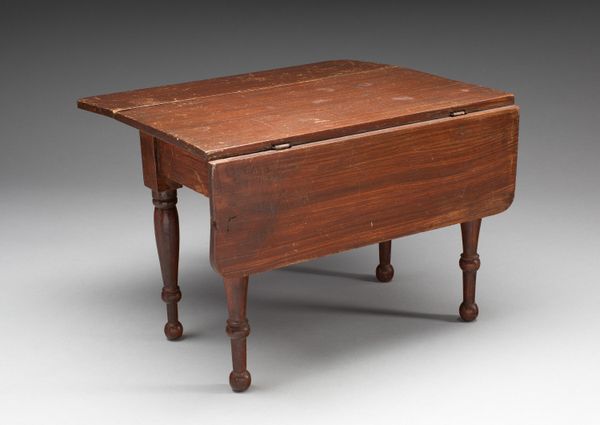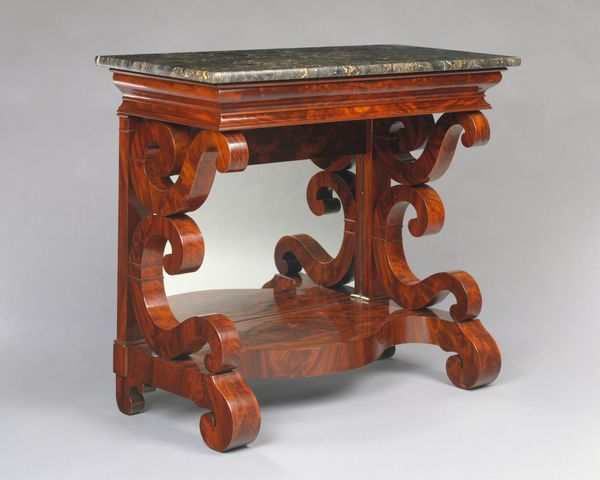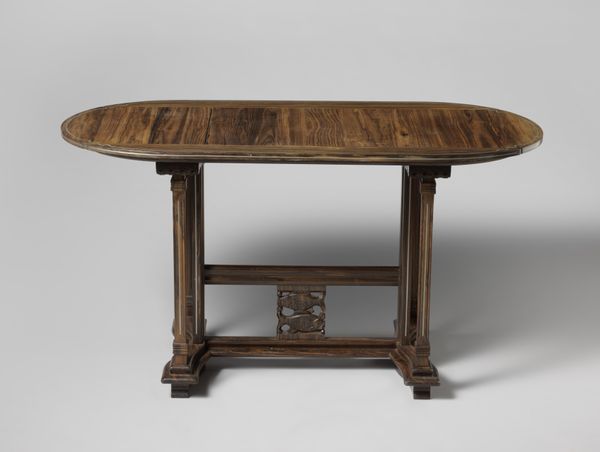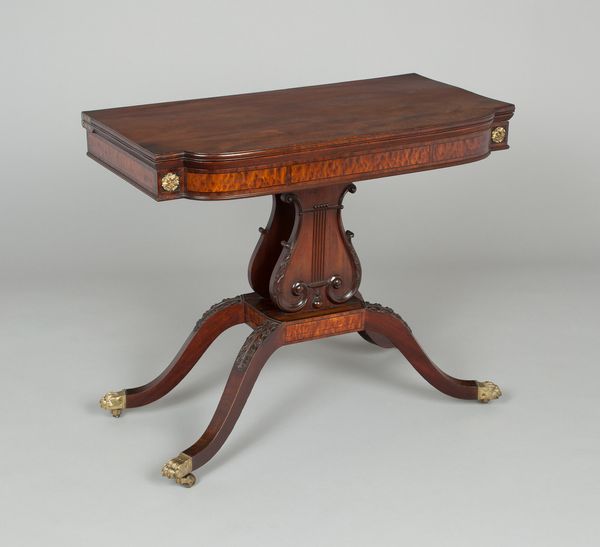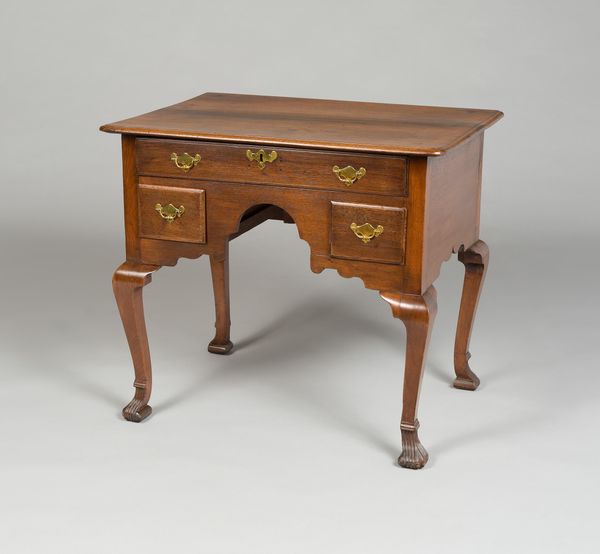
carving, sculpture, wood
#
carving
#
arts-&-crafts-movement
#
sculpture
#
furniture
#
form
#
sculpture
#
united-states
#
wood
Dimensions: 29 1/2 x 66 x 39 1/2 in. (74.9 x 167.6 x 100.3 cm)
Copyright: Public Domain
Curator: This is a Library Table made around 1904 by Rose Valley Shops. You can currently find it at the Metropolitan Museum of Art. Editor: It’s imposing. The dark wood and heavy form definitely suggest permanence, a rootedness. The carvings look almost Gothic. Curator: Absolutely. Rose Valley was part of the Arts and Crafts movement in the United States. We're seeing an emphasis here on handmade production, in response to industrialization. Editor: So, a deliberate turn against mass-produced goods. It’s interesting to consider the social implications. Who had access to these handcrafted items, and what did that say about status? Curator: Precisely. The table is crafted primarily from wood, emphasizing a return to natural materials. Notice the mortise and tenon joinery, exposed purposefully, highlighting the construction itself. There is a great deal of labour invested in its creation. Editor: Those stylized floral carvings almost evoke a medieval aesthetic, a pre-industrial ideal. What does this harkening back say about their view of modernity and the social issues around consumerism and production in America? Curator: Indeed. Rose Valley sought to reform society through its art. They were quite self-conscious about consumption, labor, and what it meant to live ethically in an industrial age. This piece shows how ideas around material honesty translated into furniture. Editor: It's fascinating to consider the politics embedded in the object's design, particularly how the emphasis on handcrafting relates to the ideals of community and anti-capitalist resistance at the time. It certainly pushes back against simple aesthetics. Curator: Viewing the piece in the Met invites contemplation of the lives of artisans who worked to shape these ideals into reality. The library table acts as a potent reminder of a community that actively sought new ways of material making. Editor: Thinking about labor, class, and intentionality makes me want to examine what kinds of futures objects like this make possible, or close off, when considering accessibility, or their implicit and explicit messaging around work and beauty. Curator: An enriching approach; let's carry that through as we continue.
Comments
No comments
Be the first to comment and join the conversation on the ultimate creative platform.
